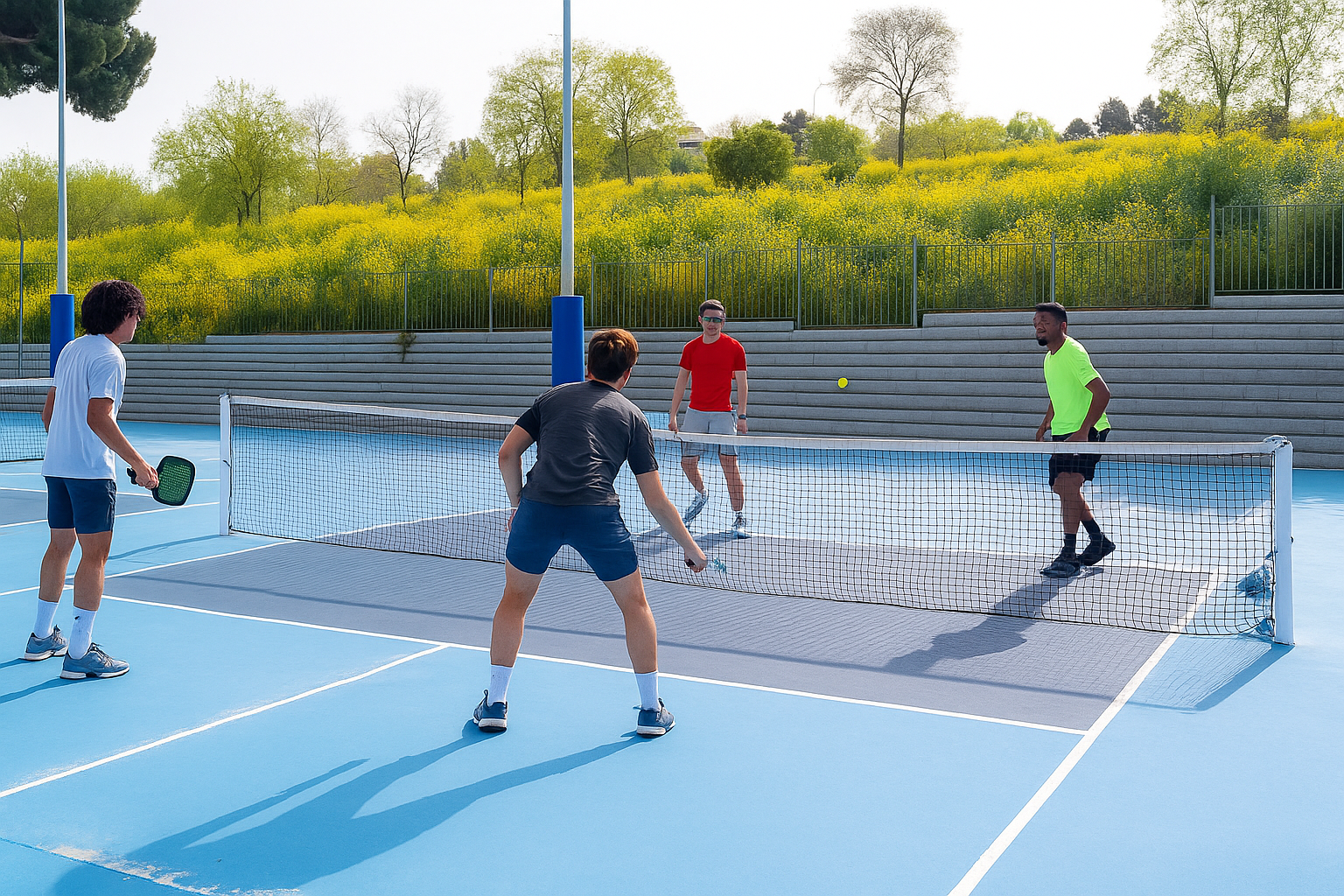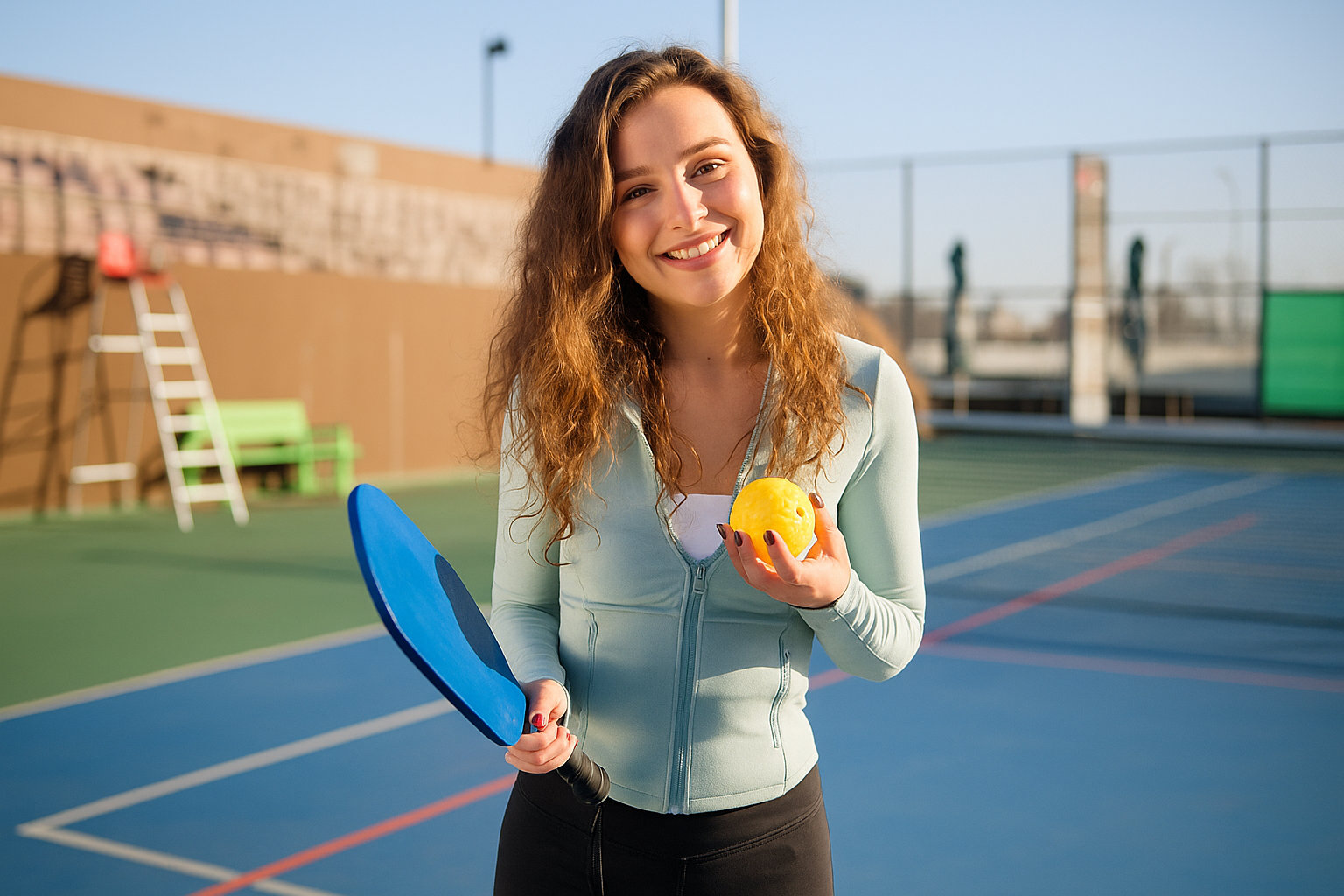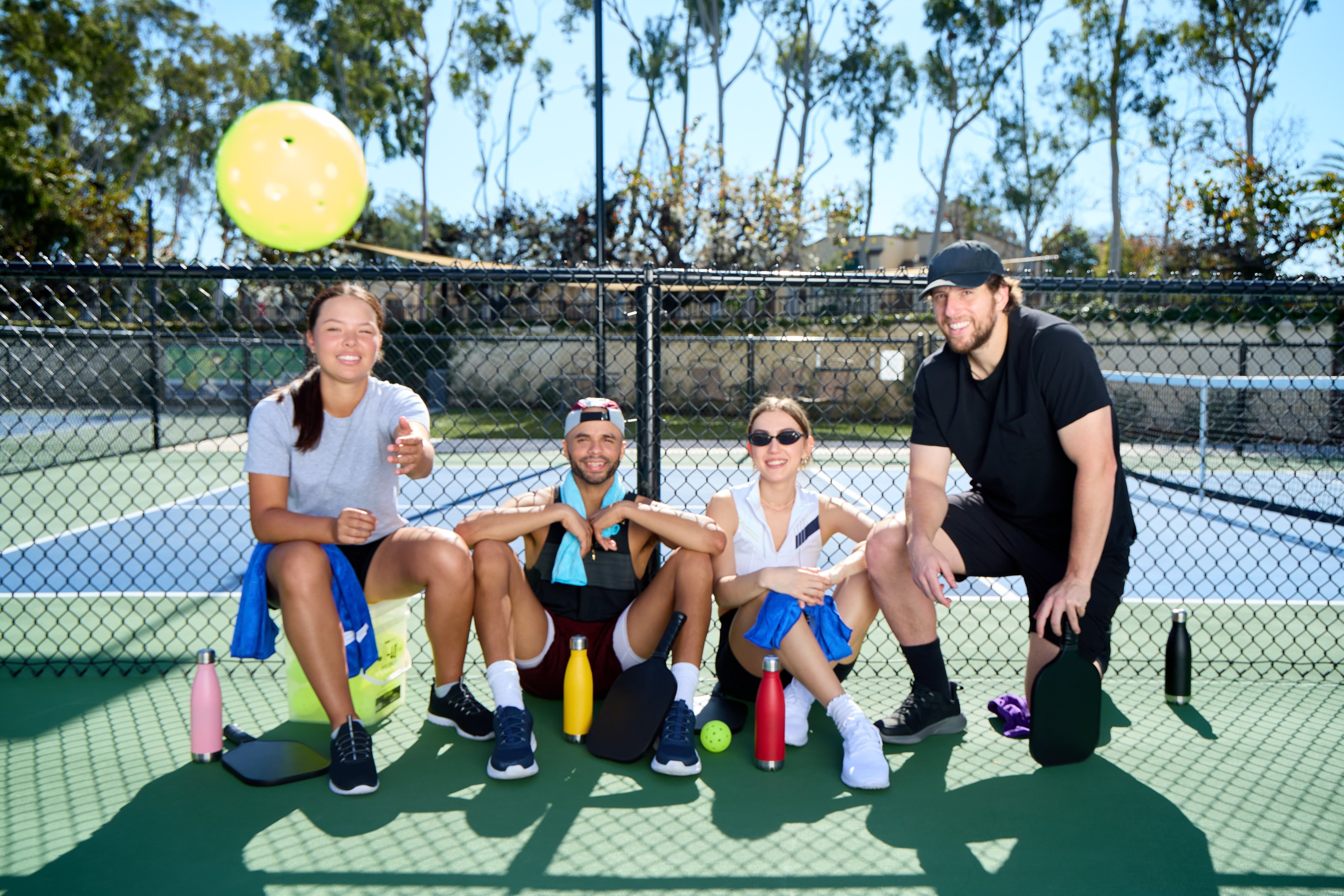
Padel Vs Pickleball: Key Differences and Similarities Between These Racket Sports
The world of racket sports is experiencing a revolutionary surge, not led by the traditional giants of tennis or badminton, but by two dynamic, accessible, and highly social contenders: Padel and Pickleball. These games, often lumped together due to their shared use of solid, stringless playing equipment (the pickleball paddle and padel racquet) offer two distinctly different athletic and social experiences.
While both have captivated players globally, their equipment, court dimensions, and game rules create unique challenges and rewards. Understanding these differences is key for anyone looking to join the racquet sport revolution taking over the courts across the United States.
What is Pickleball?
Pickleball is a vibrant racquet sport invented in 1965 in the United States. Combining elements of tennis, badminton, and table tennis, it is played on a smaller court (similar to a badminton court size) with a low pickleball net. Players use pickleball paddles (which resemble oversized ping-pong paddles often made from composite materials) to hit a lightweight, plastic, perforated ball (similar to a wiffle ball) over the net.
Want to start playing pickleball? Explore our range of pickleball attire to get you started!
What is Padel?
Padel tennis, or simply padel, is a fast-paced racket sport that originated in Mexico in 1969. It is almost exclusively played in doubles on a dedicated padel court—an enclosed court about one-third the size of a tennis court. The most defining feature is the glass walls and metal cage (metal fencing) that surround the official court, which are used strategically in play, allowing for rebound shots much like squash. Players use a solid, stringless, carbon or composite racket (padel racquet) to hit a depressurized, felted padel balls over the net, following a scoring system identical to traditional tennis.
The Core Differences of Pickleball Vs Padel: Court, Equipment, and Rules
While padel and pickleball share a rise in popularity, their fundamental mechanics set them apart. Understanding the distinctions in the court environment, the unique equipment, and the governing game rules is essential for any player comparing these two rapidly growing racket sports.
The Court
The playing environment is the most dramatic differentiator, fundamentally shaping the strategy and flow of each game. From the padel court's signature glass walls to the pickleball court's crucial non-volley zone, the court size and structure dictate play.
Padel Court
The standard padel court measures 20m x 10m. It is an enclosed court with glass walls at the back and sections of wire mesh on the sides, forming a metal cage. These glass and mesh walls are an active part of the game; after the ball bounces on the floor, players are permitted to strike it after it rebounds off the walls, leading to extended, dynamic rallies.
The net height is lower than a tennis net, typically 0.88m in the middle. Court markings include a centerline and service boxes for diagonal serving. The structure itself is a major investment, limiting its availability in many urban areas.
Pickleball Court
The official pickleball court dimensions are 13.41m x 6.10m (44ft × 20ft), making it considerably smaller—comparable to a badminton court. It is an open court with a pickleball net set low at 0.86m in the center. Its most crucial line marking is the "kitchen" or non-volley zone—a 2.13m (7-foot) area adjacent to the net on both sides. Unlike padel, there are no walls in play, focusing the game entirely on net shots and groundstrokes within the court size. The smaller area makes setting up a court easier and more affordable.
The Equipment
The tools players use are specialized for each sport, greatly influencing the game's speed and feel. The heavy, perforated padel racquet and less-pressurized ball contrast sharply with the lightweight pickleball paddle and slow, plastic wiffle ball, demanding different skill sets.
Padel Equipment
The padel racket is a solid racket made from carbon fiber, fiberglass, or foam cores. It features a thick head with a perforated surface (holes) to reduce air resistance and increase maneuverability. The ball resembles a tennis ball but is depressurized, resulting in a lower and slower bounce, which enhances strategy and control.
Pickleball Equipment
The pickleball paddle is a solid, non-perforated paddle, typically made from composite materials like graphite or polymer. They are lightweight and longer than ping-pong paddles. The ball is a plastic ball, specifically a hollow, perforated ball with 26-40 holes. This design drastically limits its bounce and speed, leading to a game that prioritizes finesse and quick hand-eye coordination over raw power.
The Game Rules
Though both require an underhand serve, the path to scoring is drastically different. Padel uses a familiar tennis scoring system alongside its unique rebound shots, while pickleball relies on an original system and the strategic complexity of its non-volley zones.
Padel Rules
Padel typically uses the same scoring system as traditional tennis (15, 30, 40, game, set). The serve must be underhand and hit after one bounce in the server's service boxes. The unique element is the use of the glass walls; the ball can only bounce once on the floor, but can then hit any number of walls. If a shot hits the wall before bouncing on the opponent's side, it is a fault. Padel tennis is almost exclusively played in the doubles format.
Pickleball Rules
The game rules of pickleball are unique, combining a non-volley zone rule with a rally scoring system where only the serving team can score points. The serve is underhand and players must adhere to the "two-bounce rule" (the serve must bounce, and the return must bounce, before players can volley). The non-volley zones (kitchen zone) rule is paramount, dictating that a player cannot volley the ball while standing in the kitchen, preventing aggressive net play.
Shared DNA: Are There Any Similarities Between Pickle and Padel?
Despite their distinct court and equipment differences, padel and pickleball share significant common ground. Both accessible racket sports have enjoyed explosive growth by offering a fun, social, and easy-to-learn alternative to more traditional court games, attracting a diverse range of players.
- Underhand Serving is Required: Both sports mandate an underhand serve, making the start of every point consistent and highly accessible for all skill levels. This rule eliminates the difficulty of the tennis overhead, welcoming beginners to the official court.
- Utilization of Solid Rackets: Neither game utilizes a traditional strung tennis racquet; instead, players use solid rackets or paddles. This design choice emphasizes control, strategic placement, and finesse over raw power and generating maximum spin.
- Ease of Access and Social Focus: Both racket sports are widely celebrated for having low technical barriers to entry and for being highly social. This makes them ideal for community events and appealing to diverse groups, from junior programs to seniors.
Padel Vs Pickleball: Differences at a Glance
To highlight the concrete differences between these two sensational racket sports, this table compares their essential features. It’s a quick-reference guide to court size, equipment, and key game rules.
| Feature | Padel | Pickleball |
| Court Type | Enclosed by glass walls and metal fencing (metal cage). | Open, no walls. |
| Court Size | (Larger smaller court). | (Badminton court dimensions). |
| Ball Type | Felted ball, similar to a depressurized tennis ball (padel balls). | Hard, hollow plastic ball (perforated ball / wiffle ball). |
| Racket/Paddle | Padel racquet: Solid, thick face, with perforated holes, often made of carbon fiber or composite. | Pickleball paddle: Solid, flat face, no holes, made of composite materials. |
| Key Rule | Rebound shots off the glass walls are allowed. Scoring system is like tennis (15, 30, 40). | Non-volley zone (the 'kitchen') prevents volleys near the pickleball net. Points only scored by the serving side (unique scoring system). |
| Play Style | Fast-paced, dynamic, requiring positioning, strategy, and power. | Slower, strategic, focused on finesse, placement, and quick reactions. |
| Primary Location | Rapidly growing worldwide, originating in Mexico/Spain. | Explosively popular in the United States. |
How to Choose the Right Sport for You
Choosing between these two racket sports depends on your preferred pace and strategy. For a high-intensity full-body workout and complex angles, choose padel tennis. For a quick, finesse-focused, reaction game on a smaller court, pickleball will be ideal for you.
Here are five factors to consider when making your choice:
- Pace of Play: If you enjoy a faster, more dynamic game that requires covering a larger distance and using power, choose padel. If you prefer a slower, controlled game with quick, close-to-the-net exchanges, opt for pickleball.
- Physicality & Impact: Pickleball is generally lower-impact due to the slower ball and smaller court size, making it ideal for older players or those with joint concerns. Padel, with its larger movements and potential for longer, more aggressive rallies, offers a more intense full-body workout.
- Strategic Focus: Padel's use of glass walls introduces an entirely new, three-dimensional element of strategy. Pickleball’s crucial non-volley zone and unique scoring system force a strategic focus on short-game finesse ("dinking").
- Availability of Courts: In the United States, pickleball courts are far more prevalent and easier to set up (paddle tennis courts are sometimes converted), whereas finding a dedicated padel court can still be a challenge in many regions outside of major urban areas.
- Preferred Scoring: If you prefer the traditional tennis-style scoring (15, 30, 40, game), padel's game rules will feel familiar. If you like the unique, rally-based system where only the server can score, pickleball is the sport for you.
If you think pickleball is the sport for you, explore our range of pickleball clothing and accessories to get started!
Start Your Pickleball Journey with Stylish Pickleball Performance Wear from Eleven Social Club
At Eleven Social Club, we are passionate about bringing performance and style to the fastest-growing game in the United States! We offer a full line of pickleball apparel designed with comfort in mind, ensuring you look your best on the pickleball court.
Our collection includes breathable, sweat-wicking tops, skirts with ball pockets, stylish shorts, and comfortable athleisure pieces perfect for both intense matches and social play. United by play, our gear helps every enthusiast feel connected to the vibrant pickleball community.


